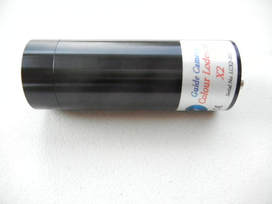 Newtonian and Dobsonian telescopes are commonly used for astronomy because of their relatively low cost and fast focal ratios, typically f/5 or faster. Dobsonians are just Newtonian optical tubes on an Alt-Az mount after the style made popular by John Dobson. There is a critical consideration when choosing a Newtonian for deep sky video astronomy, Electronically Assisted Astronomy, or Near Real Time Viewing, whichever you call it. Newtonians and Dobs, unlike Schmidt Cassegrains and refractors, do not have a lot of in-focus travel which is required to focus analog cameras like the Revolution Imager, Mallincam Xtreme, Strellacam, Samsung, etc, or digital USB cameras like those from ZWO, Atik, Rising Tech,etc. This is especially the case if using a focal reducer to speed up the optical train and/or achieve a large field of view. When there is not enough focus travel, modification of the optical tube may be required to achieve focus with a camera. Fortunately, there are many Newtonians and Dobs which are able to achieve focus with a camera without the requirements for scope modification. These are often, but not always, sold as imaging Newts. The table below shows a list of Newts and Dobs that have been reported on Cloudy Nights as compatible for use with various cameras without modification to the scope. There are certainly many more than listed here, but these are the ones I am currently aware of. They span the range from 100mm aperture to 305mm and all are fairly fast even without a focal reducer. Several of these scopes have also been verified to work with a focal reducer without the need for any modifications. This is shown in the "Focal Reduction" column.  Starlight Xpress Lodestar X2C Starlight Xpress Lodestar X2C When a Newtonian scope does not have enough in-focus travel to work with a video camera, there are two options. First, modify the scope by moving the primary mirror closer to the secondary. Some truss tube collapsible scopes make this easy to do with a specific configuration for imaging which brings the primary mirror closer. But the solid tube Newtonians do not have this option and require mechanical modification to bring the mirror closer. Many have done this modification to make their existing Newts compatible for use with cameras. It will require re-doing the collimation, but Newts seem to require frequent collimation anyway. If shifting the primary mirror position is not something that you are comfortable with, there is another option. There are many bullet style cameras with 1 1/4" diameters either their full length or enough of it that they can fit further down the focuser, bringing the camera's imaging sensor close enough to focus, even with the addition of a focal reducer. Examples include the Starlight Xpress X2C, Revolution Imager IMX224, and the Rising Tech IMX224. It has been reported that this works with the 8" f/6 and 12" f/5 GSO Dobsonians along with a 16" f/4.5 Meade Lightbridge Truss Dob. These can even achieve focus with a 0.5X focal reducer by using a 2" negative profile adapter like this one from ScopeStuff which allows the camera body to slide even further inside the focuser. Even though cameras like the Mallincam Micro Ex, LnTech300, Revolution Imager 1 are not bullet shaped, they are small enough to fit down inside a 2" focuser allowing these cameras to achieve focus with many Newts. However, with both the bullet style cameras and these small rectangular cameras, be careful that they do not slip down and contact the secondary. The 1/4" x 20 mounting bracket found on the Micro, etc. is useful as positive stop to prevent this from happening.
0 Comments
Leave a Reply. |
Categories
All
Archives
January 2024
|


 RSS Feed
RSS Feed